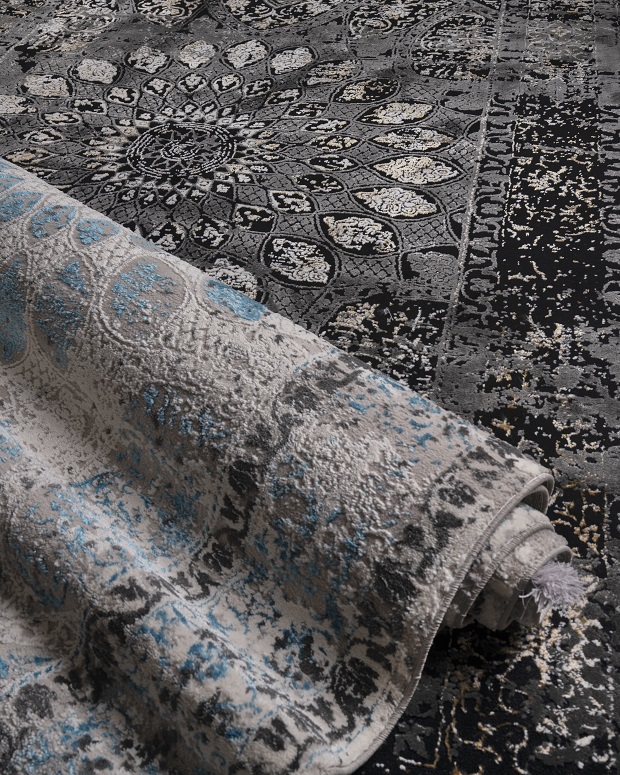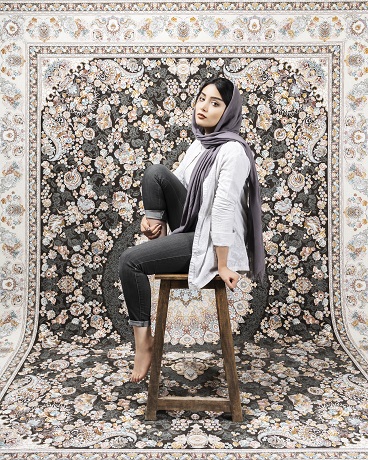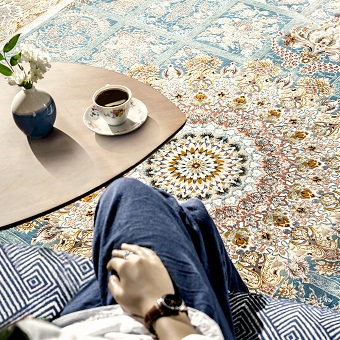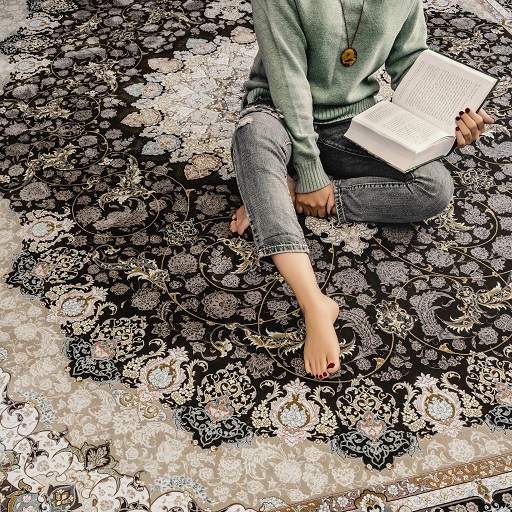Vintage (antique-looking) carpets and their features
Nowadays when choosing between tradition and modernity has become so difficult, a vintage carpet is a perfect option for an original change in decoration. We have all been in situations that make us want to remove anything traditional from our lives and minds and bring modernity into our homes instead. And sometimes we would be willing to pay fortunes to get back the old days or at least relive those feelings once again
We see often that people buy old items and accessories and keep them in the modern environment of their homes so that they can create a unique and memorable contrast. Vintage carpets, also called antique-looking carpets, are designed, produced, and sold with this very idea in mind If you wish to multiply the beauty of your home with old decorative elements, vintage carpets are just the thing for you.
1- What is a vintage carpet?
The term Vintage or antique-looking is generally used for decorative elements that are considered antiques, and have a long history This is why old-looking carpets that have a great resemblance to old ones are called vintage carpets. You surely know in the expertise of carpets, that the older and more well-worn a carpet is, the more its price and value will be.
As you know nowadays the price of antiques is higher than ever and acquiring them has become very difficult. There is no doubt that antique carpets are no exception. Seeing as we cannot buy actual antique carpets because of their hefty price, we should turn to new carpets that look old. Buy this we mean vintage carpets.
A vintage carpet is a popular carpet that has lost its original fresh color and doesn’t have any pile. This group of carpets that have an old and worn-out look, are an appropriate replacement for the antique carpets that many of us can no longer afford.
2- Making new carpets look old; a work with a long history!
It might interest you to know that making new carpets look old isn’t something limited to the present and has roots in the distant past. In the past, they laid new carpets in streets and alleys so that their appearance would change and they would look aged because of sunlight and the passing of people. Then they would be washed with water, a brush, and ash, which is alkaline. Today this is called a cure-wash (Dava-sho)
By using calcium hypochlorite during the Cure-washing process, the wool and fiber in the carpet lose their luster and color, and look old and well-worn.
Now you might say to yourself that we pay money to get a new carpet and give our home a beautiful appearance So then what is the use of a vintage carpet? Why would someone rather pay money for a carpet that already looks old?
3- The use of vintage carpets:
A carpet is one of the most essential elements of home decor for us Iranians. So much so, that if there is no carpet, nothing can show its beauty the way it should!
Carpets with any design, pattern, or color will create a unique and stylish environment. The thing that makes vintage carpets popular is their harmony with various decoration styles and with modern items and furniture. It doesn’t matter if your home is decorated in a minimalist or classic style. The important thing is that your home will gain a grand authenticity with the use of this beautiful vintage carpet!
4- How vintage carpets are made:
So far we’ve said that a vintage or antique-looking carpet is a carpet that has a classic pattern and has been made to look old and antique using industrial methods This type of carpet is usually made using machines, however, there are various other ways to make them, but seeing as these methods are somewhat complicated, they are not used often!
Are you interested in learning about this method?! Stay tuned.

To make a vintage carpet, first, we choose a carpet and cut off the roots from around it. Then it is re-sewed or in some instances the white roots are colored with dark colors like pomegranate skin, so they take on a golden color and look old. In the next step, the carpet’s pile is trimmed and is thus made to look like an old and well-worn carpet. Next, the carpet is washed with chemicals like Calcium Hypochlorite, so its color will appear faded and less intense. As we pointed out before, this process is called a cure-wash.
After the cure-wash, the carpet is folded and put into a roller machine so the surface of the carpet will become smooth. In this stage, the carpet is laid out under the sun so its color will change as much as is desired. It doesn’t end there! Now they must re-dye the carpet. Even though some of the carpet’s color fades after cure-washing, none of its pattern is lost. Therefore, the desired color can be added to the remaining parts by re-dyeing them. This is what causes the colors used in vintage carpets to be inconsistent. You will understand this if you look at the appearance of vintage carpets.
Some vintage carpets are vibrant and some are faded. Some are full of bright colors, and some are dark. You can purchase and use the appropriate vintage carpet according to your taste, and your home’s interior decor.
5- The benefits of vintage carpets:
Vintage carpets, like any other type, have their advantages and disadvantages. By keeping in mind the various features of these carpets, you can choose one and thus give your home a unique appearance, if you wish to do so. Some of the most important benefits of vintage carpets are their classy and beautiful appearance, authentic design, affordable pricing, compatibility with interior decor, etc. If you have a carpet that has gotten old and you no longer wish to use it, you can turn it into a beautiful and lovely vintage carpet.
6- Vintage carpets; a carpet suitable for a variety of interior decorations:
Maybe when you see a vintage carpet, you think to yourself that these carpets would not suit your home, and are only good for old homes with old furniture. If you think this, you are deeply mistaken. The captivating design of vintage carpets has turned it into an ideal option for use in minimalist decor.
These seemingly old carpets are available in various designs and can therefore cater to various tastes. Even if you have decorated your house to look modern, but are fond of antiques, we suggest that you enhance your home’s beauty with a vintage carpet.
These carpets are offered in many patterns including Eliz, Negar, Venice, Turkish, French, Isfahan, modern, Maryam, etc. They are also weaved in various sizes and reeds, including 700, 1200, and 1500 reeds.
7- The price of vintage carpets:
The price of vintage carpets is one of the most influential factors in buying this type of carpet for consumers. It is interesting to know that the price of these carpets, like all other carpets on the market, is dependent on various factors, the most important of which are density, reeds count, thread type, brand, the company that makes them, etc.
Even though the price of these carpets may vary, and is dependent on the aforementioned factors, what really matters is that their price is ideal relative to their beauty and efficiency. Especially since these carpets replace the expensive antique carpets that we cannot afford. So it is better to use the cheaper alternative!







